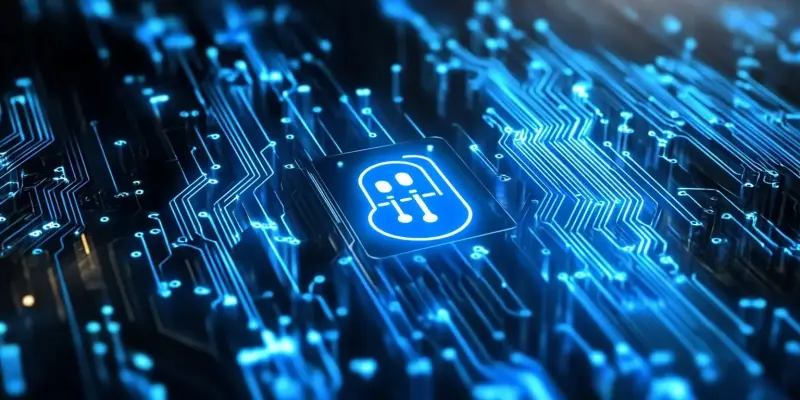Recent discoveries by security researchers have unveiled significant vulnerabilities within the ESP-IDF framework, particularly affecting the ESP32 devices through their Bluetooth interfaces. These vulnerabilities, present in specific versions of the framework (5.0.7, 5.1.5, 5.2.3, and 5.3.1), are severe and warrant immediate attention. The primary concern lies within the BluFi reference application, which is employed for configuring WiFi credentials over Bluetooth connections. The implications of these findings are far-reaching, given the widespread adoption of ESP32 devices in various sectors, from smart homes to industrial systems.
Identified Technical Vulnerabilities
The main technical issues identified include buffer overflows in the WiFi credential settings and significant flaws in the Diffie-Hellman key negotiation process. These technical flaws are particularly concerning as buffer overflows allow malicious actors to execute arbitrary code on affected devices by exploiting improperly set length parameters in WiFi credential commands. A critical weakness arises from a hard-coded public key buffer within the BluFi implementation, which not only leads to buffer overflows but also opens up vulnerabilities to Man-in-the-Middle attacks due to insufficient authentication mechanisms.
The ramifications of these vulnerabilities are extensive. Attackers could potentially gain full control over compromised devices, extract sensitive data, and intercept WiFi credentials. Given that Espressif Systems’ chips are prevalent in numerous IoT applications, the security risks presented by these flaws are immense. Specifically, the risk is exacerbated by widespread use in smart home systems, industrial automation, and various connected ecosystems. NCC Group’s analysis of these issues underscores the urgent need for patching and updating affected systems to safeguard against exploitation.
Mitigating Identified Vulnerabilities
Developers and users must take immediate action to mitigate these vulnerabilities. It is highly recommended to update the ESP-IDF framework to the latest patched versions available in the esp-idf repository. Critical commits have been made to address these memory corruption issues across different code branches. This step is essential to close the security gaps identified by researchers. Developers utilizing the BluFi interface should be particularly vigilant, ensuring that all security patches are integrated and applied.
Furthermore, organizations using ESP32 devices are advised to conduct ongoing security audits and implement additional protective measures. Such measures might include strengthening authentication protocols, enhancing encryption methods, and regular security reviews. By doing so, organizations can further minimize risks associated with potential exploitation. The highlighted vulnerabilities stress the importance of robust security practices, which are increasingly crucial as IoT adoption grows globally. Being proactive and ensuring continuous security diligence can significantly mitigate the announced risks.
Importance of Continuous Updates and Security Measures
These developments underscore an essential lesson: the need for continuous updates and proactive security measures in IoT deployments cannot be overstated. The vulnerabilities discovered in widely used platforms such as ESP-IDF emphasize the critical need for constant vigilance and timely updates. These measures are paramount to safeguard connected ecosystems from evolving threats. Security, as an ongoing practice, is vital in ensuring the integrity and safety of devices and data.
In addition to updating frameworks, developers should enhance their security protocols continuously. Regularly revising code for potential vulnerabilities, staying informed about emerging threats, and adopting industry best practices are crucial. By prioritizing security at every stage of development and deployment, organizations can better protect themselves against potential exploitation. The interconnected nature of modern technology necessitates a holistic approach to security, where preventive measures are as important as reactive ones.
Taking Action Against Current Security Threats
To address these critical vulnerabilities effectively, the immediate recommendation for developers involves updating the ESP-IDF framework. These updates are vital for the security and functionality of any system using ESP32 devices. While updates and patches are a crucial first step, a comprehensive audit and ongoing monitoring of system security should follow. An approach that integrates both preventive and reactive security measures can offer the best defense against potential intrusions.
In summary, addressing and neutralizing these vulnerabilities promptly is critical. The landscape of IoT devices and their associated security practices is continually evolving. As such, staying ahead of potential threats requires a commitment to regular updates, thorough security audits, and adopting best practices. By doing so, the risk of exploitation can be minimized, ensuring the safe and secure operation of IoT devices in various applications. Robust security measures and continuous improvement are essential in maintaining the integrity and functionality of interconnected systems.
Future Considerations
Recent investigations by cybersecurity experts have identified critical security flaws within the ESP-IDF framework, with a particular impact on ESP32 devices through their Bluetooth interfaces. These vulnerabilities have been detected in specific framework versions, namely 5.0.7, 5.1.5, 5.2.3, and 5.3.1. The severity of these security gaps underscores the urgent need for intervention. The core issue is the BluFi reference application, which is used to configure WiFi credentials via Bluetooth connections. Given the extensive use of ESP32 devices across a variety of sectors, ranging from smart home applications to complex industrial systems, the consequences of these vulnerabilities are profound and far-reaching. It’s crucial for stakeholders in these sectors to address these weaknesses promptly to safeguard their systems against potential breaches. The security of connected devices depends not just on timely updates but also on vigilant monitoring and robust security practices to mitigate such risks.

